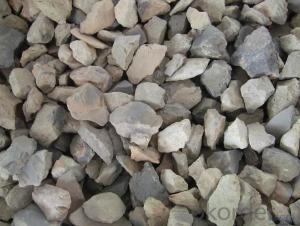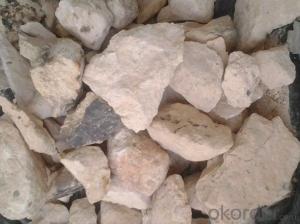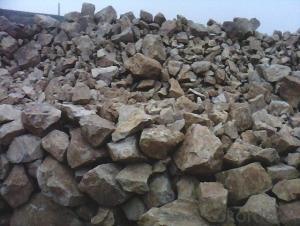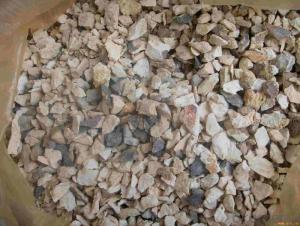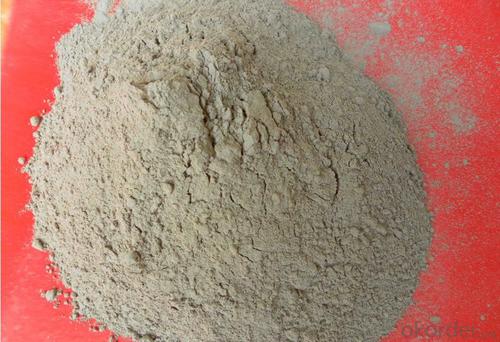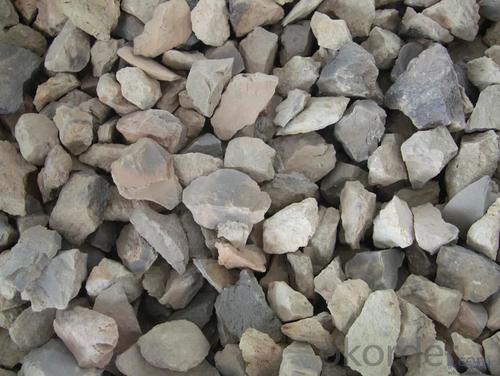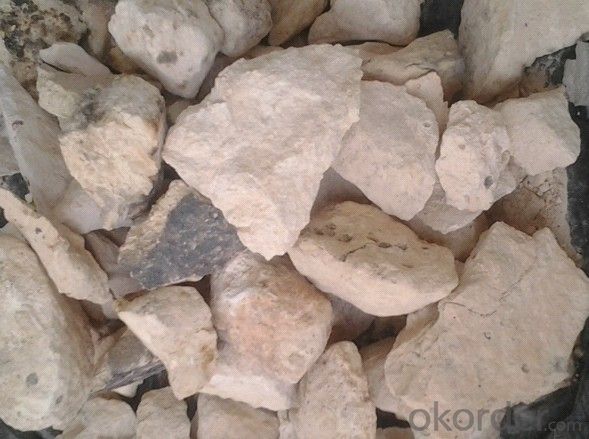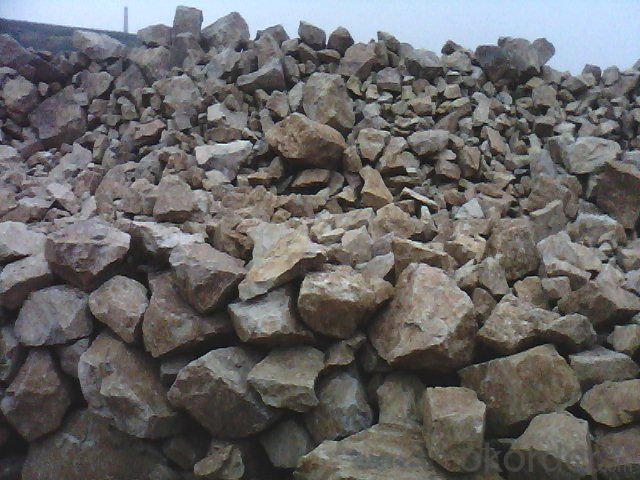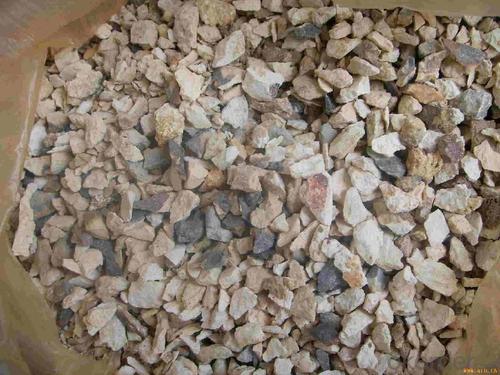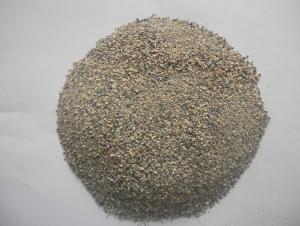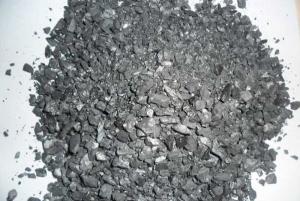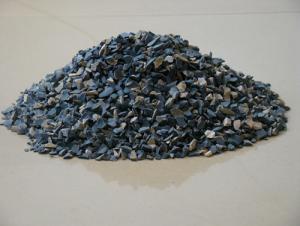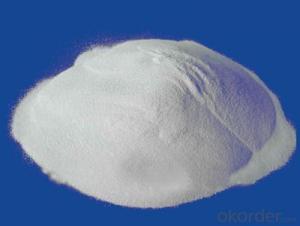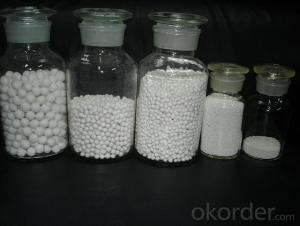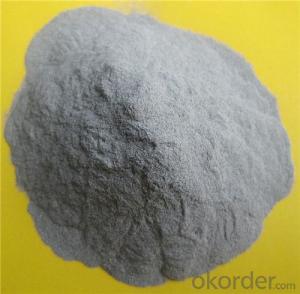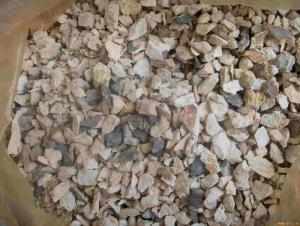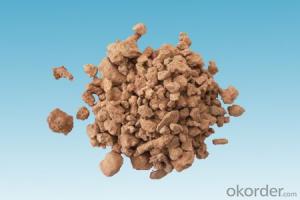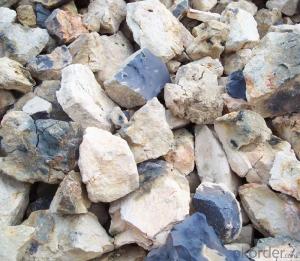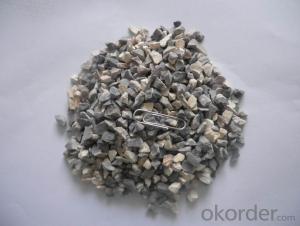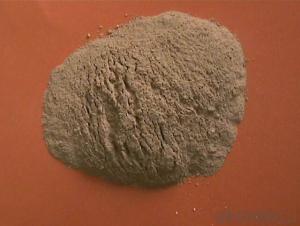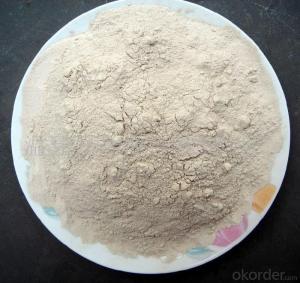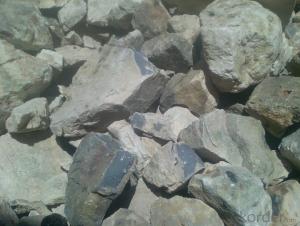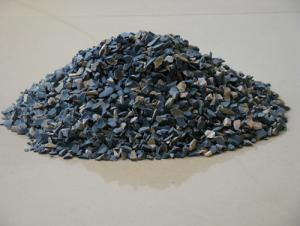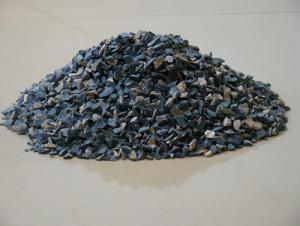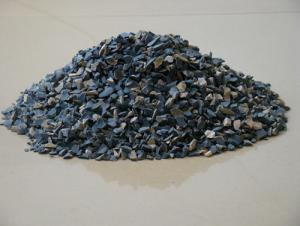Raw Materials for Refractory:Refractory Grade Calcined Bauxite of CNBM in China
- Loading Port:
- Tianjin
- Payment Terms:
- TT OR LC
- Min Order Qty:
- 11 m.t.
- Supply Capability:
- 10000000 m.t./month
OKorder Service Pledge
OKorder Financial Service
You Might Also Like
Refractory Grade Calcined Bauxite of CNBM in China
1.Structure of Calcined Bauxite Description
Calcined bauxite is one of the principal ore of aluminum. Calcined bauxite contains hydrous aluminum oxides and aluminum hydroxides, formed through the laterization of aluminous rocks in tropical and subtropical areas . Calcined bauxite is obtained by calcining (heating)superior grade bauxite at high temperature (from 85OC to 1600C) .this can removes moisture thereby increasing the alumina content. Compared to an alumina content of about 57%to 58% in raw bauxite, calcined bauxite has an alumina content of 75% to 90%.
2.Main Features of the Calcined Bauxite
Calcined bauxite is one of the principal ore of aluminum. Calcined bauxite contains hydrous aluminum oxides and aluminum
hydroxides, formed through the laterization of aluminous rocks in tropical and subtropical areas .Calcined bauxite is obtained by calcining (heating)superior grade bauxite at high temperature (from 85OC to 1600C) .This removes moisture there. By increasing the alumina content,compared to an alumina content of about 57%to 58% in raw bauxite, calcined bauxite has an alumina content of 84%to88%.The heating is carried out in rotary kilns.
3.Main usage of the Calcined Bauxite
1) The bauxite for aluminum industry in defense, aerospace, automotive, electrical, chemical, and daily supplies; 2) Bauxite clinker processed into fine powder and made after the casting mold. Used in military, aerospace, communications, instrumentation, machinery and medical equipment sector; 3) The bauxite can be used in refractory products. The refractoriness of high-alumina clinker is up to 1780 . Its features are chemical stability strong, and physical properties of sound; 4) It can manufact alumina cement, abrasive materials and aluminum compounds.
4. Calcined Bauxite Images
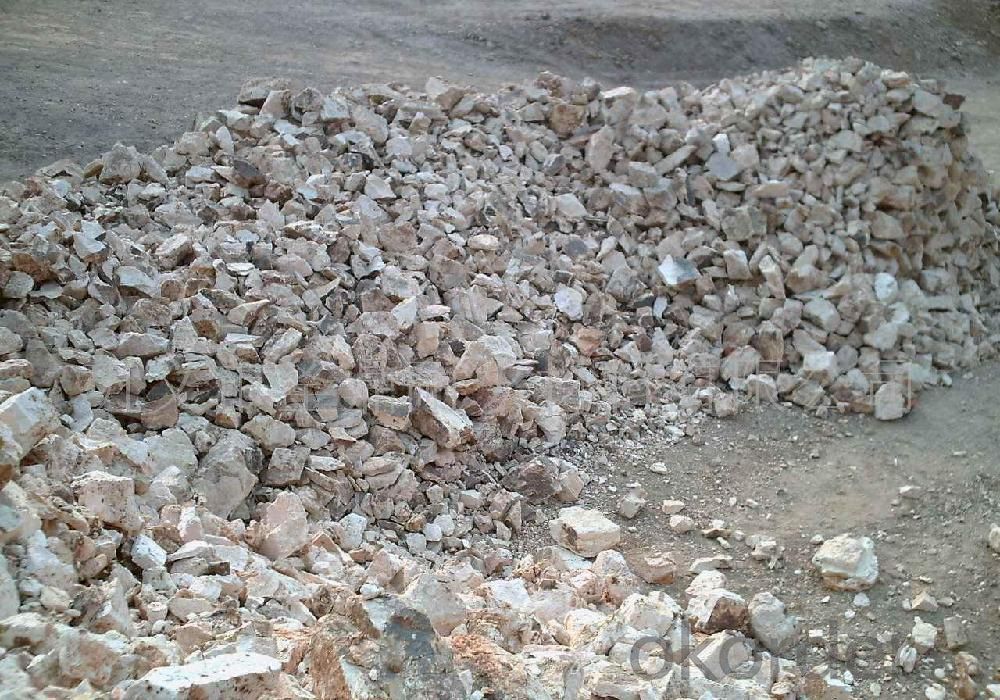
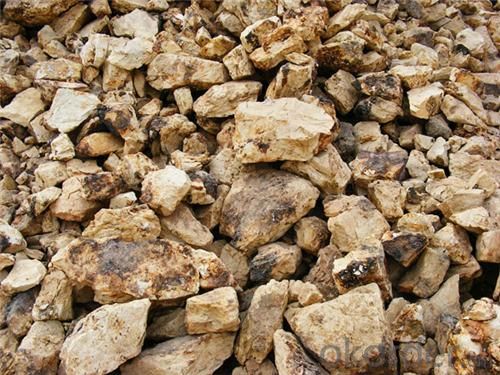
5. Calcined Bauxite Specification
Item | Al2O3 (min) | Fe2O3 (max) | TiO2 (max) | SiO2 (max) | KO2+NaO2 (min) | CaO+MgO (min) | Bulk Density(g/cm3) |
70 | 70% | 2.5% | 2.9min | ||||
75 | 75% | 3.0% | 4.0% | 8% | 0.3% | 0.6% | 2.7min |
80 | 80% | 3.0% | 4.0% | 8% | 0.3% | 0.6% | 2.8min |
85 | 85% | 2% | 4.0% | 8% | 0.3% | 0.6% | 3.0min |
86 | 86% | 2% | 4.0% | 8% | 0.3% | 0.6% | 3.2min |
87 | 87% | 2% | 4.0% | 7% | 0.3% | 0.6% | 3.2min |
88 | 88% | 1.8% | 4.0% | 7% | 0.25% | 0.6% | 3.25min |
90 | 90% | 1.8% | 4.0% | 7% | 0.25% | 0.6% | 3.25min |
1) Al2O3≥83%
2) Fe2O3≤2.0%
3) K2O+Na2O≤0.6%
4) B.D.≥3.10/cm3
5) Water Absorption≤4.5%
6) Sizes: Lumps /Grains:0-1mm,1-3mm,3-5mm,5-8mm /Powders:100mesh, 200mesh,325mesh
6.FAQ of Calcined Bauxite
1). Q: Are you a factory or trading company?
A: We are a factory.
2). Q: Where is your factory located? How can I visit there?
A: Our factory is located in ShanXi, HeNan, China. You are warmly welcomed to visit us!
3). Q: How can I get some samples?
A: Please connect me for samples
4). Q: Can the price be cheaper?
A: Of course, you will be offered a good discount for big amount.
- Q: What is the main constituent of refractory brick?
- There are several refractory bricks, including clay brick, carborundum brick and chromium-carbon. The type you said may be refractory bricks made from bauxite.
- Q: What's the fire?retardant material of roller shutter fire resistance door ?
- I am happy to answer this question. Fire resistant rolling shutter door is generally filled with aluminum silicate fiber cotton inside. fire resistant rolling shutter doors are divided into special inorganic fireproof rolling shutter door and steel fire resistance rolling shutter door. The former has better fireproof?performance, but the later has certain wind load resistance and can be installed outdoors.
- Q: What is molten silicon? What refractoriness do refractories made by it have? What properties of using does it have?
- Molten silicon can be called quartz glass, which shows an amorphous silicon state. It is a liquid fusion at above 1723 degree and is an ultra-cooling state at low temperatures. It is not generated in refractories, but generated in the matrix, showing liquid state at a high temperature capable of buffering the stress with somewhat binding properties. If quartz glass is used as refractory, its function are melrly these ones. (These are what I konw for reference only.)
- Q: What kind of refractory materials can withstand 1500℃ when processing briquette stove core and meanwhile cost less?
- The main material is quartz sand and it is the cheapest, and can resist 1500℃ without any difficulty.
- Q: Who knows that among refractory materials, insulation boards from which refractory material industry is superior in quality?
- When casting ingot, after high temperature molten steel is poured into ingot mold, molten steel keeps shrinking during cooling, for example, killed steel is shrinking 3% --5%. because of fast heat dissipation of ingot head , some shrinkage holes appear at the head of ingot. Therefore, you should cut shrinkage holes which account for more than 15% of the ingot quality in the head while cutting steel ingot cogging. If effective measures were taken to insulate the head of ingot from heat, then the coagulation time of ingot head would lag behind in the body of the ingot solidification, which will greatly shrinkage holes, improve ingot yield so as to reduce energy consumption of steelmaking. Adiabatic plate can achieve this purpose. China Heng insulation board has the advantages of uplifting adiabaticity and small heat capacity, so that it greatly reduced heat loss of molten steel, And the tundish can be directly put into use without preheating, thereby saving a large amount of preheating fuel. So in the current process of continuous casting, the heat insulation board is the main material of tundish lining.
- Q: What are the specific steps of stirring the steel ladle castable?
- Steps are as follows. 1 Compulsory mixer is used to stir the castable and bags, rope and other debris can not mix in the castable when stirred. 2, Castable should be unpacked on the scene. Stirred volume depends on the capacity of the mixer. Castable should be accurately measured and put into a blender. 3 The process of first dry mixing and then wet mixing is adopted. After the castable is added to the mixer, it is dryly mixed for 2 minutes, add about 5.2 to 5.5 percent of water and continue to add water while stirring. Water that is 80% of the total should be added, and then decide whether to continue to add or not depending on the consistence (noting that the water must be clean water and sewage can not be used). Then it is wetly mixed for 4 minutes and stirred for not less than 6 minutes at one time, until castable is even. In general, the bottom is slightly dry and the wall of the ladle is slightly dilute (the amount of water is only for reference). 4, The amount of water and mixing time should be controlled strictly when stirred to ensure that the needs of the consistency are met. If castable is too thin, it will seriously affect the quality of the material. The stirred volume, stirring time and water that is added should be consistent and they can not suddenly be thick or suddenly be thin. If the consistency does not meet the requirements, the castable should be put back to the mixer and stirred with appropriate water or dry materials. 5, It should be stirred evenly and casting should finish in 20 minutes, in order to avoid sclerosis, affecting structural strength of ladle lining 6, After each completion of construction, varieties of castable should be changed and the mixer should be cleaned 7, Stirring can stop in halfway. If the mixer breaks down and it can be repaired in a short time, some of the materials have to be removed before the machine is opened. If the machine can be repaired on time, castable refractory should all be removed.
- Q: What is the magnesium carbon refractory?
- The composition of refractory brick There are many types of raw materials of refractory brick, mainly divided into six categories: Soil, stone, sand, mineral, power and others. The first kind of raw material, soil: Aluminum soil, kaolin, clay, diatomaceous earth The second kind of raw material, Stone: Fluorite, kyanite, andalusite, forsterite, vermiculite, mullite, pyrophyllite, chlorite, dolomite, sillimanite, magnesia-alumina spinel, silica The third kind of raw material, sand: Pottery, zircon sand, quartz sand, magnesite The fourth kind of raw material, ore: Chrome ore The fifth kind of raw material, powder: Aluminum powder, silica powder, silicon powder The sixth kind of raw material of refractory brick, others: Asphalt, graphite, phenolic resins, perlite, cenosphere, sialon, corundum, silicon sulfate, silicon carbide, sodium silicate, silica solution, boron carbide, calcium aluminate cement, nitride material, shale ceramisite, alumina, alumina sol and zirconia, etc.
- Q: Which kind of external wall fire barrier zone material is better?
- The following types are: rock wool, aerated concrete, phenolic aldehyde and foam cement rock wool fire barrier zone "rock wool board" mainly uses water-repelling rock wool board produced by pendulum method as thermal insulation layer materia, and connecting and fixing base wall by binding and nail bonding, it is composed level A non-combustible building energy efficiency thermal insulation system by plastering layer composed by plastering mortar and glass?fiber mesh and decorative mortar finishing layer or coating. Good air permeability
- Q: What is the offer of fire proofing thermal insulation material?
- The following prices are from the Internet and for your reference only. Hainan fire proofing thermal insulation material ceramic fiber paper aluminum silicate fiber blanket/aluminum oxide fiber insulation cotton insulation pipe 12 yuan Hainan multicrystal mullite/calcium silicate corundum ceramic fiber loose wool short fiber fire proofing thermal insulation material non-asbestos high temperature resistant aluminum silicate fiber insulation cotton fire-resistant material ceramic fiber blanket thermal insulation blanket 28 yuan non-asbestos high temperature resistant aluminum silicate fiber ceramic fiber blanket needled felts insulation blanket fire resistant material thermal insulation cotton blanket reference price: 59 yuan
- Q: Does refractory belong to metallurgical auxiliary materials?
- Refractory is widely used in industrial circle, such as metallurgy, chemical industry, petroleum, mechanical manufacturing, silicate and power, and its coonsumption is the maximum in metallurgy, accounting for 50% to 60% in total output. In order to improve slag-corrosion resistance of furnace lining, usually choose carbon-containing refractory. Refractory of various furnace lining are respectively: For the body, it is clay brick; as for the lower part, bosh and middle, it is SiC brick; for furnace bottom, it is carbon brick. Lattice brick is an important refractory product used in air heating furnace and regenerative chamber. Refractory is widely used in metallurgy. In order to improve slag-corrosion resistance of lining. Central line in tuyere and hearth are high-alumina brick. Refractory consumption is the maximum in metallurgy, accounting for 50% to 60% in total output. For the bosh and middle, it is SiC brick. In order to improve its thermal storage capacity: The furnace stack is clay brick. It is defined as refractory where the physical and chemical properties allows its use in high temperature environments; The lower furnace body
Send your message to us
Raw Materials for Refractory:Refractory Grade Calcined Bauxite of CNBM in China
- Loading Port:
- Tianjin
- Payment Terms:
- TT OR LC
- Min Order Qty:
- 11 m.t.
- Supply Capability:
- 10000000 m.t./month
OKorder Service Pledge
OKorder Financial Service
Similar products
Hot products
Hot Searches
Related keywords

